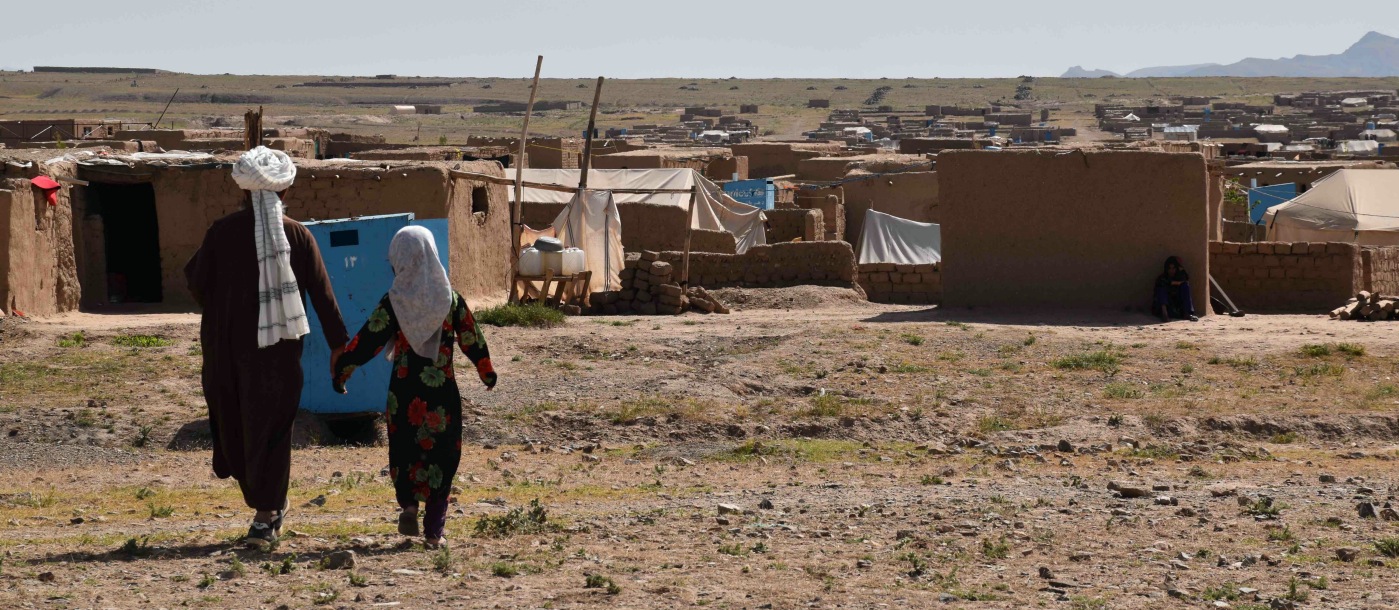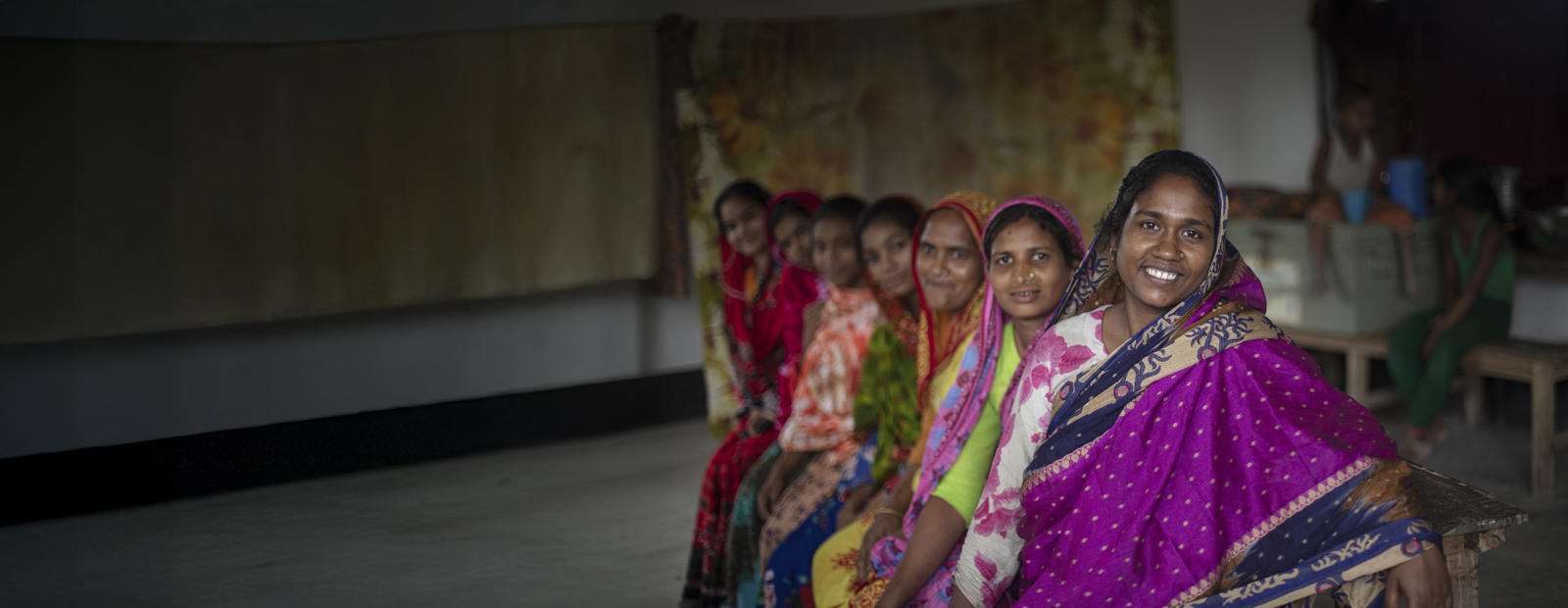Half of Afghanistan is facing a hunger crisis
The situation in Afghanistan has been tumultuous for some time. Conflict forced more than 700,000 people from their homes in 2021; an earthquake claimed more than 1,000 lives in June 2022; and drought, rising food prices, COVID-19 and economic decline have contributed to around half the country’s population going to bed hungry each night.
“The triple crisis of the economic hardship created by the pandemic, drought and the current insecurity leaves women in an incredibly difficult situation,” says Marianne O’Grady, CARE Afghanistan’s Deputy Country Director. “CARE is deeply concerned that hard-won gains by women and girls are being rolled back.”
Fast Facts
Population: 34,124,811 (July 2017 est.)
Life expectancy: 51.7 years (50.3 years male, 53.2 years female) (2017 est.)
Infant mortality: 110.6 deaths/1,000 live births (2017 est.)
Under-5 mortality*: 70.4 deaths/1,000 live births (2015 est.)
Maternal mortality: 396 deaths/100,000 live births (2015 est.)
Adult literacy rate: 38.2% (52% male, 24.2% female) (2015 est.)
Access to improved drinking water: 55.3% (78.2% urban, 47% rural)
Access to improved sanitation: 31.9% (45.1% urban, 27% rural)
Labour force participation rate^: 86% male, 17.3% female (2017 est.)
Percentage of seats held by women in national parliament^: 28%
GDP per capita: $1,900 (2017 est.)
Source: CIA World Factbook, *UNICEF, ^ World Bank
Supporting and empowering 1,153,922 Afghan women, children and men through crisis and challenge as they build their own futures.
Thanks to the incredible support of donors since July 2022, we have been able to support communities in Afghanistan in the following ways:
1. Emergency aid
Women have been supported with emergency cash, livelihood assistance, and help to reduce violence against women and girls during crises. More than half of all those assisted were women.
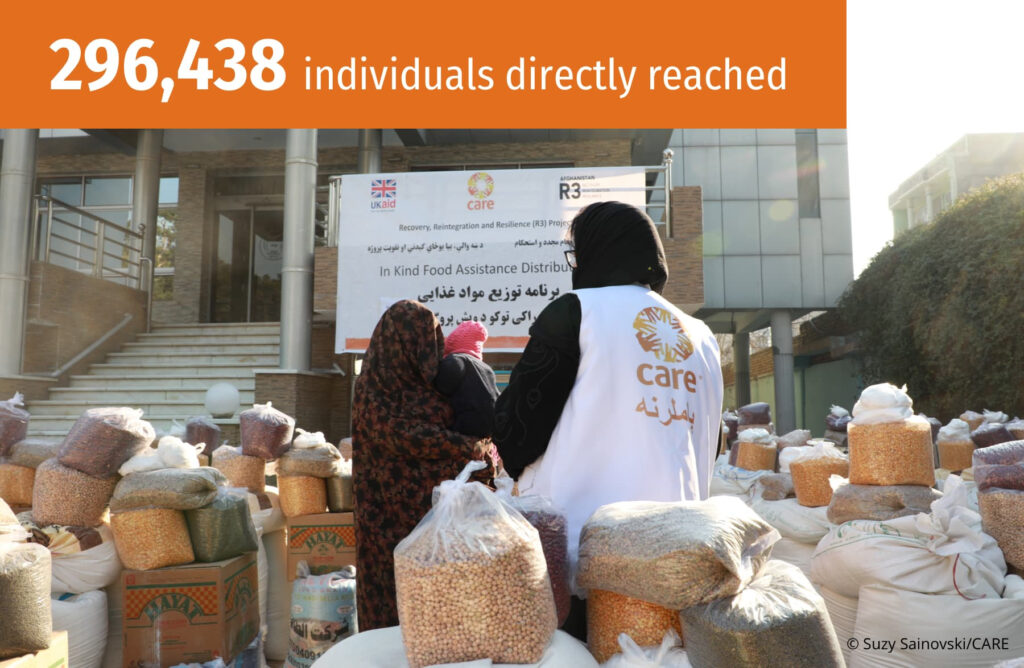
2. Resilience building
Our programs in Afghanistan focus on improving women’s ability to support their families. CARE provides support in helping women earn an income, feed their families and more.
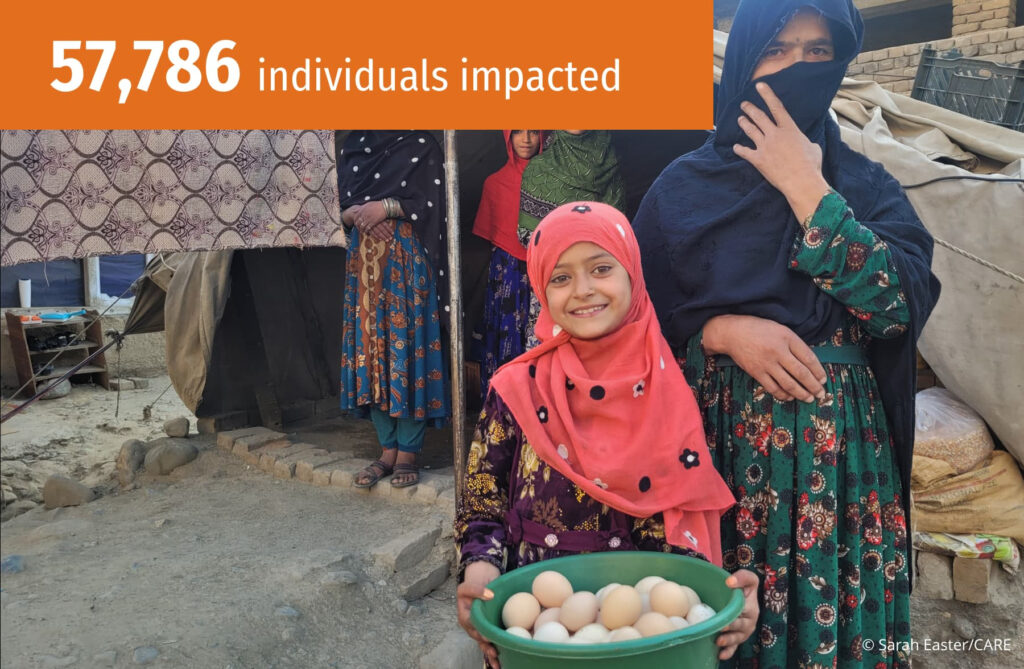
3. Girls’ education
Since March 2022, secondary school-aged girls in some areas couldn’t attend school. CARE’s community-based efforts, particularly in remote areas, create safe and culturally suitable learning environments.
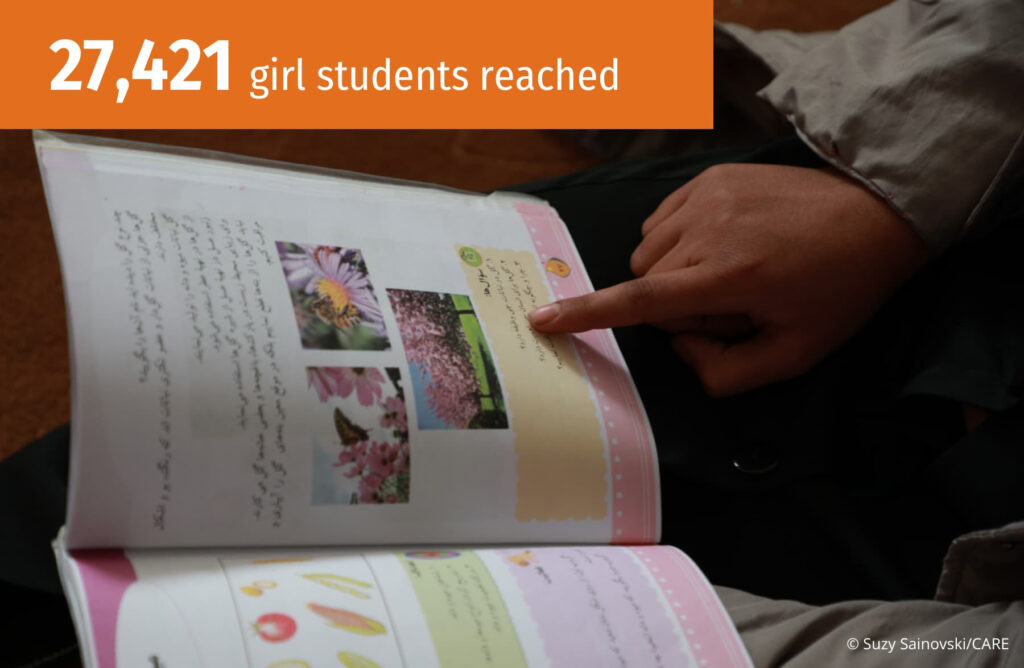
4. Health
Women encounter challenges in accessing health services, such as distance, transportation costs, and a shortage of female doctors. CARE’s Mobile Health Teams travel to remote areas daily, providing free and lifesaving health services.
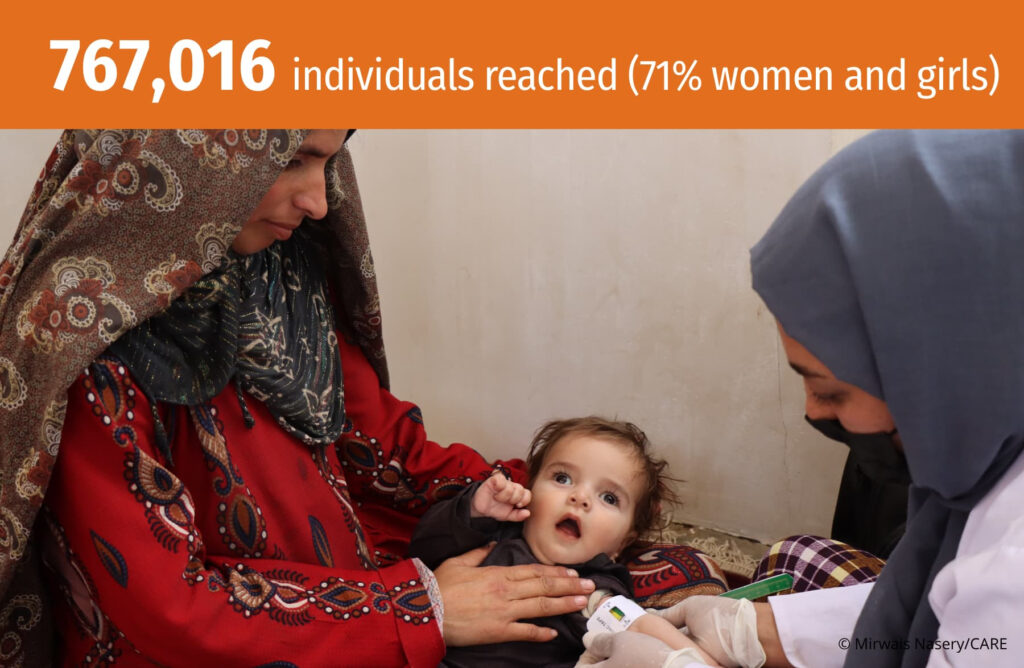
Afghan families making horrific choices so they can put food on the table
Marianne O’Grady – CARE’s Afghanistan Deputy Country Director has shared some insight into the experiences in Afghanistan for millions of people right now;
“They go to bed hungry. They wake up hungry. Everyone in the house wakes up hungry… The winter is setting in. Growing food is impossible. Buying food is getting harder, as prices have skyrocketed… Almost 23 million people – more than half the population of Afghanistan – are facing acute hunger this winter. That’s the equivalent of almost every single person in Australia being hungry almost all the time.”
“Many parents in Afghanistan are being forced to make the most horrific choices to keep their family members alive, and it’s usually the girls who suffer the consequences. We have seen the reports of baby girls being sold so families have money to buy food. Young girls are being married off so there is one less mouth to feed.”
We simply cannot stand back and watch this happen. We must act like lives depend on it, because they do. More funding is urgently needed to support the humanitarian needs of the Afghan people like Zarghona (45);
“I can’t sleep at night. I’m concerned about my children. I am afraid we will all die because of hunger.”
Resilient livelihoods
Afghanistan ranks among the lowest in the world in terms of human development (169 of 188 countries and territories) and is one of the poorest countries in the world. Since the agricultural sector is central to Afghanistan’s economy, it is critical to strengthen the country’s ability to produce efficiently and effectively, and improve job opportunities for women. Many regions have long-established farming practices, poor infrastructure, and limited knowledge of markets and the production process, and are susceptible to natural disasters including flooding, drought, landslides, and earthquakes.
From 2015 – 2018, CARE played a significant part in improving agricultural practices and production, ensuring households can access agricultural related information and networks. The project worked with vulnerable rural communities to enable households with limited access to land or employment to grow their own food, improving food security, income and resilience. The project has also seen vulnerable groups better equipped to influence decision-making processes relating to their livelihoods.
Donate now
Support our ongoing work to create a more equal world.
Your donation can help end extreme poverty and give people the means to build a better future for themselves in countries like Afghanistan.
For those living in extreme poverty, your support brings education and training, healthcare and clean water, nutritious food, and new ways to earn an income. And in times of crisis, you help us deliver emergency relief. Please make a lifesaving donation today.
